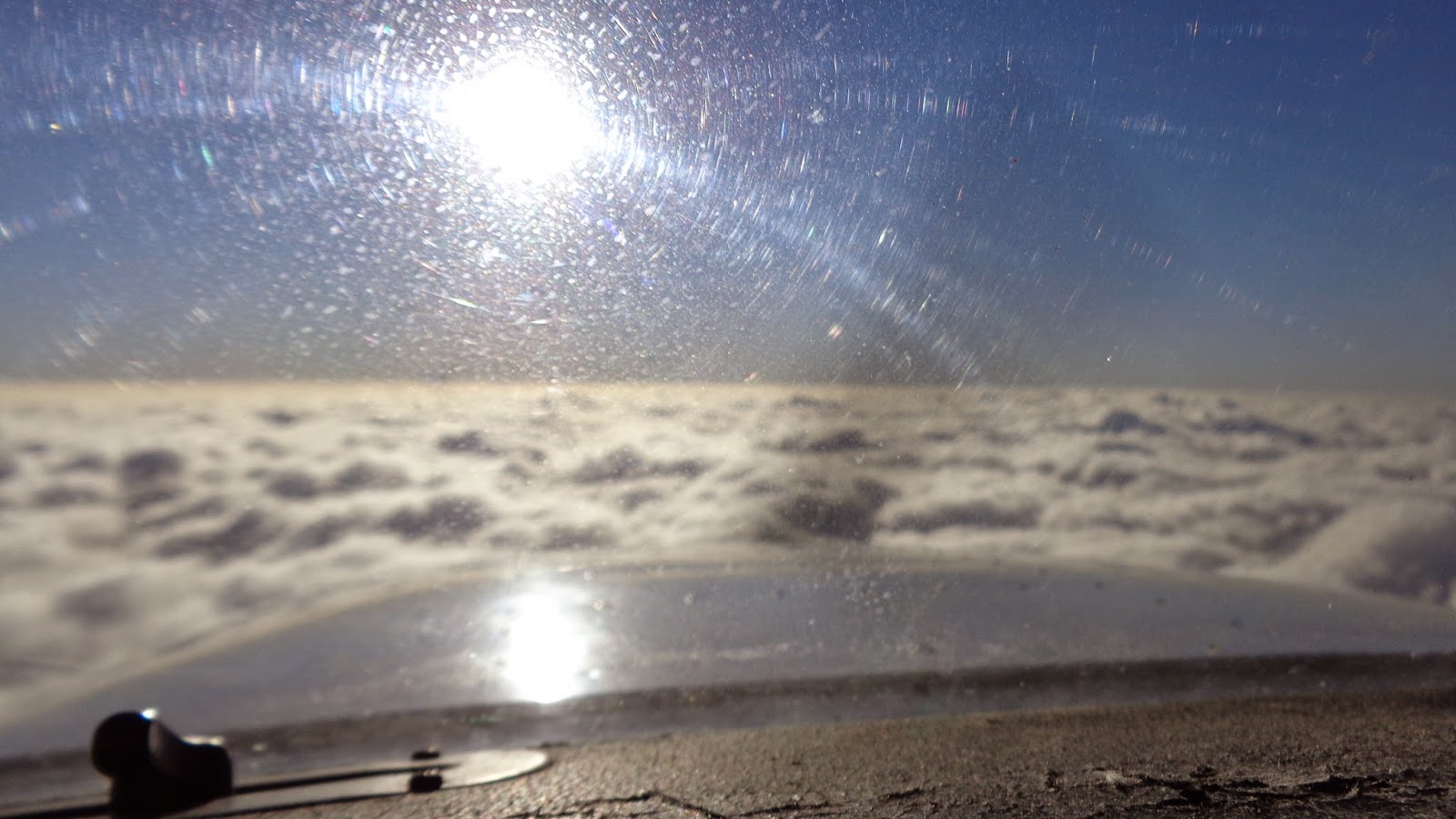Apologies for missing an update last week, but unfortunately I was rather distracted by what was going on at home. My sister who was 8 months pregnant had been rushed into hospital, which eventually led to her being in intensive care, so naturally I was desperate to get home sooner to be with her as I felt helpless on the other side of the world. My line manger Troy was fantastic in getting through my flights, and my Instrument instructor Phil even worked overtime to get me finished quicker. The right people were brilliant at the right time, and for that I am hugely appreciative. Obviously it's not something I want to discuss further, but I am now a proud uncle for the first time, baby Annabel my new niece.
Wellington International from 9000ft

 During week 47 I completed my last few simulator sessions in readiness for instrument flight in the aircraft. The last two were flown to represent real flight profiles, from the planning to the workload en route. During my first ops route I could have been quicker with the tasks that needed carrying out, and as I took a leisurely pace earlier I gave myself a bit of a mountain leading up to the approach. Fortunately I sorted this for my final simulator flight, so felt a bit more confident ahead of my first flight in the aircraft. Obviously in keeping with the rest of the course the weather put the brakes on, with a deep layer of cloud and a low freezing level keeping me grounded. This is because flight in cloud above the freezing level will cause icing, and as the Cessna doesn't have any anti-ice equipment the flight couldn't go ahead.
During week 47 I completed my last few simulator sessions in readiness for instrument flight in the aircraft. The last two were flown to represent real flight profiles, from the planning to the workload en route. During my first ops route I could have been quicker with the tasks that needed carrying out, and as I took a leisurely pace earlier I gave myself a bit of a mountain leading up to the approach. Fortunately I sorted this for my final simulator flight, so felt a bit more confident ahead of my first flight in the aircraft. Obviously in keeping with the rest of the course the weather put the brakes on, with a deep layer of cloud and a low freezing level keeping me grounded. This is because flight in cloud above the freezing level will cause icing, and as the Cessna doesn't have any anti-ice equipment the flight couldn't go ahead.
Chasing the sun West
When the weather did show signs of improvement I was lucky enough to be part of a long trip down to the top of the south island, flying the first and the third legs of a three flight day. The best part about the trip was that I was in the back seat when we crossed the Cooke Strait between the North and South islands, so was able to sit back and enjoy the views. Hopefully some of the pictures do it justice.
last time I race the Cessna's shadow whilst training
Luckily for me and my efforts to get home quicker I completed my final flight on Monday afternoon, and after Troy had offered to complete my sign out the next day I was in a position to change my flights. Annoyingly the earliest flight I could get was 48 hours later, but after rapidly completing the sign out and managing to join another cadet who was heading home on the Tuesday, I went to Auckland in the hope of finding some luck. Thankfully I was able to get a flight that evening getting me to Gatwick, and after ~30hrs of almost sleepless travel I made it home.
I've now got a couple of weeks off before my next phrase of training in Bournemouth, time I want to spend helping my sister as much as possible, getting to known my niece and catching up with Alice and my parents. It's not long before the most intimidating part of my training commences, so I plan to use the time off as much as possible.






